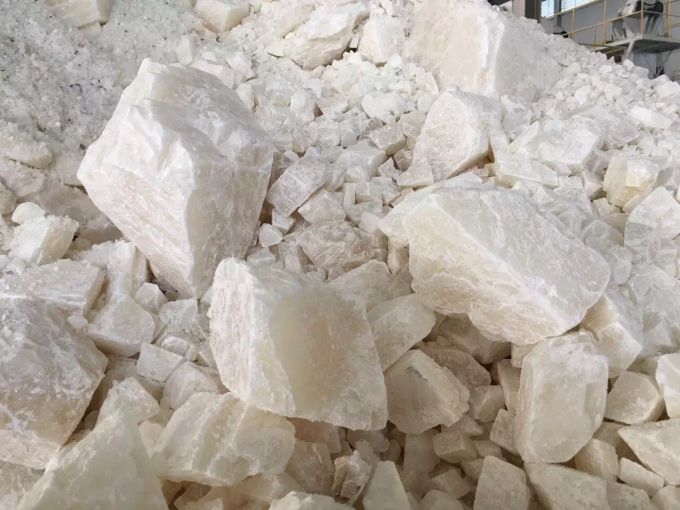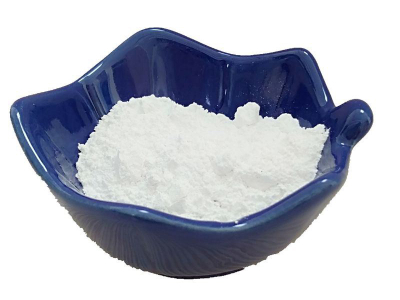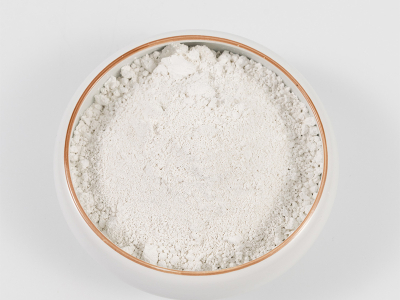Application of precipitated barium sulfate in high temperature powder coatings
It has high reflectance in the range of 300-400um wavelength and can protect the paint film from light aging. It is an effective and cheap white matt stabilizer. Its needle-like crystal structure makes it a good leveling agent, and can increase the leveling property of the coating, can be used in self-cleaning coating as an enhancer; At the same time, because of the low oil absorption of barium sulfate, it has a high filling amount, so it can reduce the cost of coating.
First, the influence of particle size on the gloss of the coating
The finer the particle size of barium sulfate, the higher the gloss of the powder coating, and the highest gloss of the powder coating made by precipitation barium sulfate.
Two, plane powder coating coarse grain control
Precipitated Barium Sulfate (PBS), a synthetic form of barium sulfate (BaSO₄), is widely recognized for its exceptional whiteness, chemical inertness, and controlled particle size distribution. These properties make PBS a valuable functional filler in high temperature powder coatings, enhancing durability, mechanical properties, and aesthetic qualities.
This article provides a comprehensive technical exploration of the application of PBS in high temperature powder coatings, examining material properties, engineering principles, regulatory considerations, and practical guidelines. It also addresses common questions to assist formulators and manufacturers in optimizing their coatings for demanding environments.
Understanding Precipitated Barium Sulfate (PBS)
PBS is produced via a chemical precipitation process, resulting in a high purity (>99%), ultrafine, and uniform particle size barium sulfate powder. Compared to natural barite, PBS offers:
Superior brightness and whiteness
Narrower and controllable particle size distribution (typically 0.1–2 μm)
Enhanced dispersibility in resin matrices
Excellent chemical inertness and thermal stability
Role of PBS in High Temperature Powder Coatings
High temperature powder coatings are designed for applications where surfaces are exposed to temperatures typically between 200°C and 400°C, such as automotive components, industrial machinery, and household appliances. In these systems, PBS serves several critical functions:
1. Extender and Filler
PBS acts as a cost-effective filler that maintains or improves mechanical strength and hardness without compromising thermal resistance.
It reduces the overall cost of formulations while maintaining desirable film properties.
2. Improved Surface Finish
Due to its fine particle size and high brightness, PBS enhances the smoothness, gloss, and whiteness of coatings.
It reduces surface defects and improves opacity and hiding power.
3. Thermal Stability
PBS remains chemically and physically stable at elevated temperatures, ensuring the coating’s integrity during curing (typically 180–220°C) and in service.
Its high melting point (~1580°C) prevents degradation or discoloration under heat stress.
4. Scratch and Abrasion Resistance
PBS enhances the scratch resistance of cured powder coatings by reinforcing the resin matrix, contributing to longer-lasting finishes.
Engineering Principles and Material Specifications
Particle Size and Distribution
Optimal particle size for PBS in powder coatings is typically 0.5–1.5 μm, balancing dispersibility and surface smoothness.
Narrow PSD avoids agglomeration, ensuring uniform distribution in the powder matrix.
Specific Gravity and Bulk Density
PBS has a high specific gravity (~4.4 g/cm³), allowing good film build and mechanical reinforcement without excessive weight.
Surface Treatment
PBS particles may be surface treated with silane coupling agents or stearic acid to enhance compatibility with resin systems like polyester, epoxy, or polyurethane.
Thermal Behavior
Thermal Gravimetric Analysis (TGA) confirms PBS stability up to 1000°C, ensuring it will not decompose or react during typical curing cycles.
Regulatory and Safety Considerations
| Regulation / Standard | Relevance to PBS in Powder Coatings |
|---|---|
| REACH (EC 1907/2006) | Chemical registration and restriction compliance |
| RoHS Directive 2011/65/EU | Limits on hazardous substances (Pb, Cd, Hg) |
| OSHA (29 CFR 1910.1000) | Occupational exposure limits for respirable dust |
| ASTM D3451 | Standard specification for powder coatings |
| ISO 9001 | Quality management certification for manufacturers |
During production and handling, dust control measures (ventilation, respirators) are essential to protect workers.
Practical Application Guidelines
Formulation: Incorporate PBS at 5–20 wt% of total powder coating formulation depending on desired mechanical and aesthetic properties.
Dispersion: Use high-shear mixers or ball mills to achieve uniform dispersion and avoid particle agglomeration.
Curing: Ensure curing temperature matches resin requirements (180–220°C) to activate crosslinking without compromising PBS integrity.
Testing: Conduct gloss, hardness, adhesion, and abrasion resistance tests per ASTM or ISO standards to verify coating performance.
Case Study Example
A powder coating manufacturer added 10% surface-treated PBS (mean particle size 0.8 μm) to a polyester-based powder coating. The result was:
15% increase in hardness (measured by pencil hardness test ASTM D3363)
Improved gloss retention after accelerated weathering (ASTM D522)
Enhanced opacity and brightness (measured by Hunter Lab colorimeter)
No adverse effect on curing time or film adhesion
Frequently Asked Questions (FAQs)
Q1: Why choose precipitated barium sulfate over natural barite in powder coatings?
A: PBS offers superior purity, controlled particle size, and better dispersibility, leading to enhanced surface finish and mechanical properties compared to natural barite.
Q2: What is the typical loading level of PBS in high temperature powder coatings?
A: Usually ranges from 5% to 20% by weight, adjusted based on performance and cost requirements.
Q3: Is PBS compatible with all types of powder coating resins?
A: PBS is generally compatible with polyester, epoxy, and hybrid resin systems, especially when surface treated to improve adhesion.
Q4: Are there any environmental concerns with using PBS?
A: PBS is chemically inert and non-toxic. However, dust generation should be controlled to comply with occupational health standards.
Q5: How does PBS affect the curing process?
A: PBS is thermally stable and does not interfere with resin crosslinking. Proper dispersion ensures consistent curing without defects.




